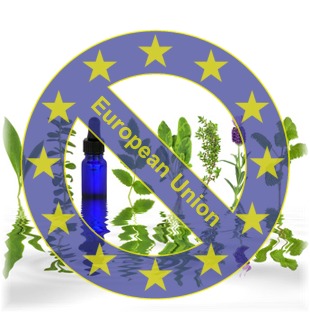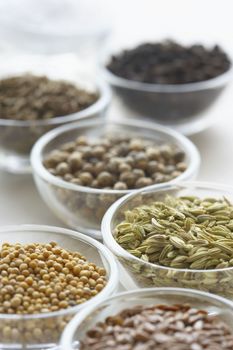Story at-a-glance
- Dr. Nancy Scanlan, Executive Director of both the American Holistic Veterinary Medical Foundation (AVHMF) and the American Holistic Veterinary Medical Association (AHVMA) talks with Dr. Becker about holistic therapies in the treatment of cancer in pets, and the role of the AHVM Foundation.
- Major drug companies pay for most of the cancer research (human and animal) in the U.S. Unfortunately, these companies are only motivated to fund studies that facilitate the development of new drugs to sell. Natural anti-cancer agents are of little or no interest to them.
- Raising independent funding for research into holistic and integrative cancer therapies is a very important focus of the AHVM Foundation. The goal is to provide scientific proof to veterinarians and the public of the uses and benefits of alternative therapies to treat animal cancer and its symptoms.
- Between now and March 17, 2013, every $1 donated to the AHVM Foundation will be automatically tripled. That’s right – Mercola Healthy Pets will contribute $2 for every $1 donation to the foundation from March 11 through March 17, 2013.
Video: Dr. Becker Interviews Dr. Scanlan
By Dr. Becker - Cross-Posted at Just One More Pet
In this week’s third and final video, I’m chatting with another very special guest, Dr. Nancy Scanlan. Dr. Scanlan is the Executive Director of the American Holistic Veterinary Medical Foundation (AVHMF) and also the American Holistic Veterinary Medical Association (AHVMA).
Dr. Scanlan has been a small animal practitioner for most of her veterinary career. She also spent 10 years teaching veterinary technicians. Dr. Scanlan is an authority on the use of nutraceuticals in veterinary medicine, and was certified as an acupuncturist in 1988. She gradually increased her use of holistic therapies in her practice and ultimately spent 16 years as the sole holistic veterinarian in a seven-person practice in Southern California. Since then, she’s been very involved in a variety of wonderful endeavors for the AVHMA and the Foundation.
Dr. Scanlan currently lives in the woods of northern California. Her home is off the grid, meaning that among other things, she uses solar panels as her source of electricity. I think that’s very cool!
Studies in holistic veterinary medicine – including the prevention and treatment of pet cancers -- get very little funding.
The theme of this year’s AHVM Foundation Be One in a Million fundraising campaign is “Advancing Research and Education in Holistic Veterinary Medicine.” I asked Dr. Scanlan to talk about why cancer research for companion animals is such a vitally important area for the AHVMF to be involved in.
Dr. Scanlan explained that studies in holistic medicine get very little funding. If she has an herb that is beneficial in treating cancer, chances are it will be ignored by the big drug companies, which are the major source of funding for most human and animal cancer research. Drug companies only fund research that results in new drugs they can sell, so natural healing substances like herbs are of no interest to them. And this is truly a shame, because many holistic therapies used for cancer have fewer side effects than conventional chemotherapy and radiation treatments. They are less toxic to the patient and the environment, and are generally better for the patient’s overall health.
So raising independent funding for holistic and integrative cancer therapies is a very important focus of the AHVM Foundation. The goal is to provide scientific proof to veterinarians and pet owners of the benefits of alternative therapies. Currently there is no “proof” of the type the medical community relies on. It’s really not enough to say “The Indians used it all the time,” or “In China they’ve used this for thousands of years.” MDs and DVMs want and need this research.
Another reason we need independent studies of holistic remedies is to determine how natural substances can and should be used. For example, what parts of a plant are beneficial to treat different diseases and symptoms … what strengths or dosages are most effective … what type of growth environment is best … should we source only the wild-crafted plants, and so on.
As Dr. Scanlan points out, this type of research would be helpful not just in advancing the field of holistic veterinary medicine, but also for current and future holistic practitioners who want to understand the most effective ways to use natural healing remedies. And in general, good standardized research in holistic treatments is needed.
When it comes to raising funds for research and education in holistic veterinary medicine, there's only ONE resource in the U.S. – the AHVM Foundation.
Next I asked Dr. Scanlan to give her perspective on why there is a need for a foundation for holistic veterinary medicine. She explained that the AHVM Foundation is the only organization in the U.S. specifically dedicated to research into holistic methods of treating animals. No other group currently in existence raises funds for research into holistic or alternative or integrative veterinary therapies exclusively.
As Dr. Scanlan points out, there are plenty of organizations out there dedicated to raising money for conventional medicine research (human and animal). But if you as a pet owner, pet caretaker, pet guardian or animal lover believe holistic and integrative veterinary medicine has value, then the organization you want to give your hard-earned money to is the AHVM Foundation.
I asked Dr. Scanlan what projects are on the horizon that the AHVMF is involved with. She responded that one of the Foundation’s biggest supporters is Dr. Greg Ogilvie, a DVM in southern California (you might remember his name from my recent interview with author Ted Kerasote).
Dr. Ogilvie developed the foundational research on the anti-cancer effects of omega-3 fatty acids, especially fish oil, on dogs. He has a long list of projects he would love to do if he had the funding.
I’d like to thank Dr. Nancy Scanlan, Executive Director of the AHVM Foundation, for making time in her busy schedule to chat with me today. I look forward to working with Dr. Scanlan and all the members of the Foundation to raise awareness of their Be One in a Million fundraising efforts.
How you can make a difference.
I’m tremendously excited to announce that now through March 17, 2013, all donations will be automatically tripled. That’s right! For every $1 donated, Mercola Healthy Pets will donate an additional $2. So please, take a moment right now to Be One in a Million and make a donation to the AHVM Foundation.
Related:
Using Alternative Therapies to Fight Cancer How to Check Your Pet for Signs of Cancer
Pukka’s Promise: The Quest for Longer-Lived Dogs
Merle’s Door: Lessons from a Freethinking Dog
StemPets and StemEquine – Stem Cell Enhancers for Pets
If I Should Die Before My Dog…
Alternative Dog Arthritis Treatment Series Part 1 – An Introduction
Do Vaccinations Affect the Health of our Pets?
Natural Pet Remedies For Everyday Problems
Animal Chiropractic Success Stories
Why is This Dangerous Infection on the Rise in Pets?
8 Out of 10 Pet Owners Didn’t Recognize These Signs of Illness – Will You?
Dog Massage? Isn’t Petting Enough?
Never EVER Punish Your Pet for This ‘Accident’…
Dog Chiropractor Helps Dogs Retain Mobility
Urinary and Fecal Incontinence in Pets
Megacolon: A Terrible Outcome for Constipated Pets
Pets Being Left Behind to Starve by Their Families
A Patchwork of Food Assistance for Pets
How the Pet Food Industry Has Helped Create "Carnivore Metabolic Syndrome"
Laser Therapy is Good Medicine for Humans and Their Companion Animals… Any Animals
Surprise, Surprise… the Best Food for Dogs Is Homemade Food
The Nutrient Your Pet Needs More of As They Age: Protein



